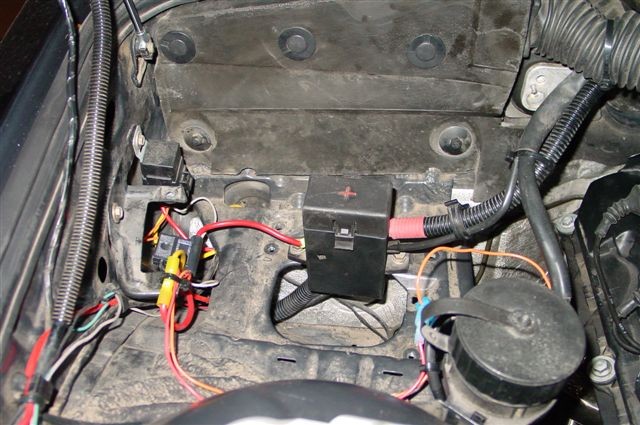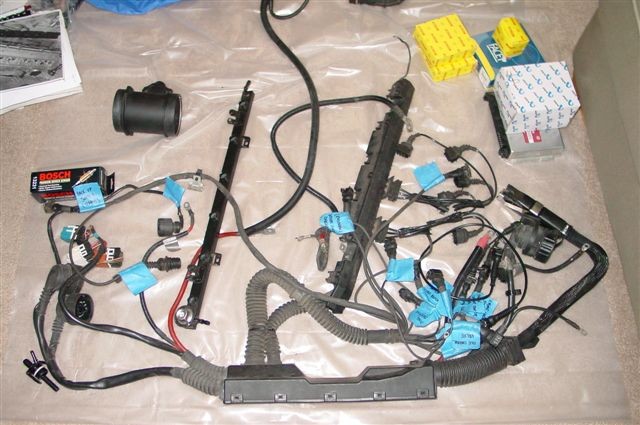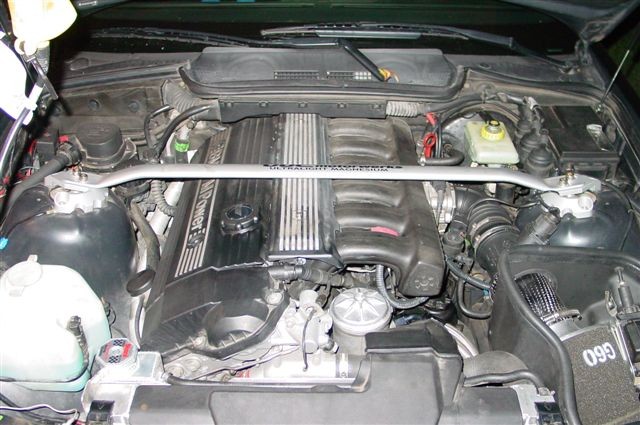For BMW enthusiasts looking to maximize the performance of their E36 models, particularly those originally equipped with OBD2 (On-Board Diagnostics II) systems, an Obd2 Obd1 conversion is a well-known and often discussed modification. While some might dismiss it as a straightforward “electronics swap,” the reality is that converting from OBD2 to OBD1 is a detailed process that requires careful planning, the right components, and a solid understanding of your vehicle’s engine management system. This guide will delve into the intricacies of this conversion, drawing upon expert knowledge and practical experience to provide a comprehensive roadmap for enthusiasts considering this upgrade.
Originally, I undertook this OBD2 OBD1 conversion on my 1999 M3, which came factory-fitted with the OBD2 S52 engine and EWS (Electronic Immobilizer System). Through extensive research on platforms like bimmerforums.com, consultations with experienced individuals, and countless hours studying wiring diagrams in the Bentley manual, I successfully navigated this complex modification. This article aims to share that knowledge, offering a detailed, SEO-optimized guide for those contemplating a similar project.
Before diving into the specifics, let’s visualize what an OBD2 S52 engine looks like in its original configuration:
Why Consider an OBD2 to OBD1 Conversion?
The primary motivation behind an OBD2 OBD1 conversion often boils down to performance enhancement and simplified engine management. OBD1 systems, particularly those found in earlier BMW models like the E36 325i (using the M50 engine), are favored by tuners and performance enthusiasts for several key reasons:
- Enhanced Airflow: OBD1 systems typically utilize the M50 intake manifold, renowned for its superior airflow compared to the OBD2 (M52/S52) manifold. This improved airflow can lead to noticeable gains in horsepower and torque, especially in the mid to upper RPM ranges.
- Simpler Engine Management: OBD1 ECUs (Engine Control Units), especially the “red label” 413 ECU, are known for their simpler, more easily tunable nature. They often lack the complexities of later OBD2 systems, including restrictive emissions controls like secondary air pumps and post-catalyst oxygen sensors, which are absent in OBD1 OBD2 conversions.
- Aftermarket Support: The OBD1 platform has a long-standing history in the BMW tuning community. This translates to a wealth of readily available aftermarket performance chips, software, and tuning resources designed to optimize engine performance when converting from OBD2 OBD1.
- Elimination of EWS (Optional): Certain OBD1 ECUs, like the “red label” 413, originate from non-EWS vehicles. For those seeking to eliminate the EWS immobilizer system, often seen as an obstacle in performance modifications, an OBD2 OBD1 conversion can offer a pathway to bypass this system when paired with a non-EWS ECU.
Essential Parts for Your OBD2 OBD1 Conversion
To successfully execute an OBD2 OBD1 conversion, you’ll need to gather a specific set of components. These parts are crucial for ensuring compatibility and optimal performance. Based on my experience and industry best practices, here is a comprehensive list:
- OBD1 Engine Harness: Sourced from an OBD1 BMW model, typically a 1992-1995 E36 325i. This harness is the backbone of the electrical conversion.
- OBD1 ECU (413 “Red Label” Preferred): The “red label” 413 ECU is highly sought after due to its non-EWS nature and compatibility with performance chips.
- OBD1 Performance Chip: Aftermarket chips, like those from Active Autowerkes or similar reputable tuners, are essential to optimize fuel and ignition maps for the OBD1 system and potentially your engine modifications.
- OBD1 Intake Manifold (M50 Manifold): The cornerstone of the performance gain, the M50 intake manifold provides superior airflow.
- OBD1 Fuel Rail: Necessary to accommodate the OBD1 fuel pressure regulator and fuel line configuration.
- OBD1 Crank Position Sensor: Different location and type compared to OBD2, requiring replacement.
- OBD1 Cam Position Sensor: Also specific to the OBD1 system and must be swapped.
- OBD1 Ping/Knock Sensors (x2): OBD1 knock sensors are required and often differ from OBD2 versions.
- OBD1 Oxygen Sensor (Pre-Cat): OBD1 systems utilize a single pre-catalyst oxygen sensor, unlike OBD2’s multiple sensors.
- OBD1 HFM (Hot-Film Air Mass Meter): The OBD1 mass air flow sensor is required for proper air measurement.
- OBD1 Main Engine Coolant Hose: The upper radiator hose configuration differs due to changes in the coolant pipe.
- OBD1 Throttle Boot: The connection between the MAF and throttle body is OBD1 specific.
- OBD1 Throttle Body (Optional): While the OBD2 throttle body can be adapted, an OBD1 throttle body simplifies installation.
- OBD1 Valve Cover and Coil Packs (Optional): Valve cover and coil pack compatibility depends on your wiring routing preference.
Step-by-Step Guide to OBD2 OBD1 Conversion
The OBD2 OBD1 conversion, while conceptually straightforward, involves numerous detailed steps. Here’s a breakdown of critical areas and considerations:
1. Valve Cover and Coil Packs
The OBD2 valve cover lacks the necessary routing provisions for OBD1 coil pack connectors. OBD2 wiring enters from the passenger side, while OBD1 wiring enters from the driver’s side. You have two main options:
-
Retain OBD2 Valve Cover: Keep your OBD2 valve cover and coil packs. This necessitates modifying the valve cover (e.g., using a Dremel) to accommodate OBD1 wiring routing.
-
Switch to OBD1 Valve Cover: Use an OBD1 valve cover, which inherently requires OBD1 coil packs. Both OBD1 and OBD2 coil versions are electrically compatible with the OBD1 harness. I opted to retain my OBD2 valve cover and modify it for wiring clearance.
2. VANOS Solenoid Wiring
The OBD2 VANOS (Variable Nockenwellen Steuerung – Variable Valve Timing) solenoid wire connector is shorter than its OBD1 counterpart. Solutions include:
-
OBD1 Solenoid: Replace the OBD2 solenoid with an OBD1 solenoid.
-
Extend OBD2 Wiring: Keep the OBD2 solenoid and extend the wiring using BMW part # 12-52-2-274-971, a transmission harness with compatible connectors, perfect for extending the VANOS solenoid wiring to reach the OBD1 harness.
3. Coolant Pipe Modification
The main coolant pipe from the timing cover differs between OBD1 and OBD2 systems. OBD2 uses a fixed metal pipe, while OBD1 uses a rubber hose connecting to an aluminum neck. You can address this in two ways:
-
OBD1 Timing Cover: Replace the OBD2 timing cover with an OBD1 version.
-
Coolant Pipe Adapter: Utilize a coolant pipe adapter from vendors like Bimmerworld, AA, or Turner Motorsport. This adapter fits into the OBD2 timing cover and is secured with JB Weld, allowing you to connect the OBD1 coolant hose with a pipe clamp.
4. Intake Manifold Swap
The M50 intake manifold is the key to performance gains in an OBD2 OBD1 conversion. It directly bolts onto M52/S52 cylinder heads without modification. The OBD1 manifold features an air temperature sensor and a vacuum port for the fuel pressure regulator on its underside, near the firewall.
5. Throttle Body Compatibility
You can retain your OBD2 throttle body, but it requires adaptation for proper gasket sealing. OBD1 and OBD2 throttle bodies have different mating surfaces. Options include:
- Adapter Plate: Use a throttle body adapter plate to bridge the gap between the OBD2 throttle body and OBD1 manifold, accommodating both gasket types.
- Extended Gasket: Employ an extended gasket designed to seal the OBD2 throttle body directly to the OBD1 intake manifold.
- OBD1 Throttle Body: The simplest solution is to use an OBD1 throttle body, eliminating the need for adapters.
6. Coolant Temperature Sender
OBD2 systems use a single coolant temperature sender, while OBD1 utilizes two. You can:
- Splice and Adapt OBD2 Sender: Splice the OBD1 harness wiring and use the OBD2 plug connector to connect to the single OBD2 sender.
- Coolant Temp Sender Adapter: Use a plug-and-play wiring adapter from Turner Motorsport for a cleaner installation.
7. Crank Position Sensor Relocation
The OBD2 crank position sensor is located on the engine block, while the OBD1 sensor is on the timing cover. You must use an OBD1 crank position sensor and install it on the timing cover. Leave the OBD2 sensor in place to plug the hole in the block.
8. Fuel Line Modifications
Fuel delivery systems differ significantly between OBD1 and OBD2. You must use the OBD1 fuel rail. This requires modifications to the fuel lines:
- Remove the OBD2 fuel pressure regulator from under the car.
- Route new 8mm fuel lines to the OBD1 fuel rail.
- Bridge the gap left by the OBD2 fuel pressure regulator using new fuel line, connecting the fuel filter feed to the front of the OBD1 fuel rail and the return line to the existing return line under the car.
- Connect the OBD1 fuel pressure regulator vacuum line to the one-way valve on the underside of the OBD1 intake manifold.
9. PCV (Positive Crankcase Ventilation) System
OBD1 and OBD2 PCV systems are configured differently. Solutions depend on your valve cover choice:
-
OBD2 Valve Cover: Retain the OBD2 PCV setup and find a way to mount the breather valve under the intake manifold.
-
OBD1 Valve Cover: Use the OBD1 breather valve, which clips onto the crankcase vent port and connects to the ICV/intake manifold plug and dipstick.
-
Breather Catch Can: Connect a hose to the crankcase vent and use a breather catch can system. I opted to connect my OBD2 valve cover to the OBD1 breather valve using a rubber hose and barbed connector for the oil drain line to the dipstick.
10. Idle Control Valve (ICV)
The OBD1 and OBD2 ICVs are identical and interchangeable. Reuse your OBD2 ICV. You’ll need the OBD1 connector and hoses for connecting the ICV to the intake manifold and throttle boot vacuum port.
11. Fuel Tank Breather Valve
The OBD2 fuel tank breather valve can be reused. You will need fittings to connect the vacuum hose to the vacuum port on the throttle boot. Hardware store barb fittings (3/8″ and 5/8″) can be adapted for this connection.
12. Oxygen Sensors and Secondary Air Pump
OBD2 systems include a secondary air pump and four oxygen sensors (two pre-cat, two post-cat). OBD1 OBD2 conversions eliminate the secondary air pump and post-cat sensors. OBD1 uses only one pre-cat oxygen sensor. Remember to plug the ports in the exhaust system where the OBD2 sensors were removed with M18 bolts (Toyota Land Cruiser oil pan drain bolts are a compatible option).
13. Oil Pan and Dipstick
Contrary to some rumors, the OBD2 oil pan and dipstick are fully compatible and can be reused without modification in an OBD2 OBD1 conversion.
14. EWS (Electronic Immobilizer System)
EWS presence varies across E36 models. If using a non-EWS ECU (like the “red label” 413), you might encounter ignition issues. A simple wiring modification to the main engine harness resolves this:
- Locate wire #66 on the ECU connector (solid green or black/violet).
- Cut wire #66 and insulate both ends with electrical tape to disable EWS.
15. Power Distribution and Grounding
Crucially, disconnect the negative battery terminal before working on power and grounding. OBD2 power distribution is located on the passenger side near the ECU compartment. You’ll need to relocate the OBD2 distribution box slightly to access OBD1 harness power connections. Utilize the screw holes freed by removing the secondary air pump to remount the distribution box closer to the firewall. Ensure you correctly identify power (RED wires) and ground (BROWN or BLACK wires) connections. There’s a ground connection under the OBD diagnostics port, a large power feed to the starter, and a small power feed to the fuse box. A small ground wire from the spark plug rail should be grounded to the engine hoist loop bolt on the VANOS unit.
{width=640 height=425}16. General Wiring and Labeling
Labeling connectors is paramount before installing the OBD1 harness. Use Bentley wiring schematics to identify each connector on the harness. Label each plug with painter’s tape and a marker to match its corresponding component. Take pictures of OBD2 power and ground connections and starter wiring during disassembly to aid reassembly.
{width=640 height=425}Conclusion: OBD2 OBD1 Conversion – Performance Realized
The OBD2 OBD1 conversion is a significant undertaking, but the performance gains and enhanced tunability can be well worth the effort for dedicated BMW enthusiasts. By carefully following these steps, sourcing the correct parts, and paying meticulous attention to wiring and connections, you can successfully convert your OBD2 BMW to OBD1 management.
My personal OBD2 OBD1 S52 conversion, combined with modifications like an Active Autowerkes chip, Sunbelt cams, Euro HFM, and performance exhaust, yielded impressive results. Initial dyno testing showed 253 RWHP and 228 TQ. After further tuning and a revised chip from Active Autowerkes, the final dyno figures climbed to 262 RWHP and 230 TQ, demonstrating the performance potential unlocked by this conversion.
While this guide provides comprehensive information, remember that automotive modifications should be undertaken with caution and a thorough understanding of your vehicle. Consulting with experienced BMW technicians or tuners is always recommended, particularly if you are unfamiliar with automotive electrical systems or engine management. The OBD2 OBD1 conversion can be a rewarding path to enhanced BMW performance, but careful planning and execution are key to a successful outcome.
